
How to Use Wemos D1 Mini V4: Examples, Pinouts, and Specs
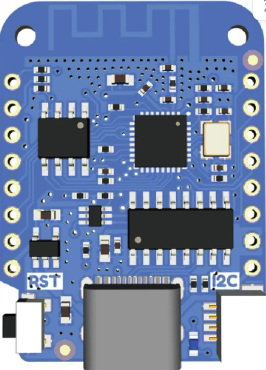
 Design with Wemos D1 Mini V4 in Cirkit Designer
Design with Wemos D1 Mini V4 in Cirkit DesignerIntroduction
The Wemos D1 Mini V4 is a compact and versatile Wi-Fi development board based on the ESP8266 microcontroller. It is designed for IoT (Internet of Things) applications, offering built-in Wi-Fi connectivity and a range of GPIO pins for interfacing with sensors, actuators, and other peripherals. Its small form factor and USB programming interface make it an excellent choice for both beginners and experienced developers working on smart home devices, wireless data logging, or other connected projects.
Explore Projects Built with Wemos D1 Mini V4
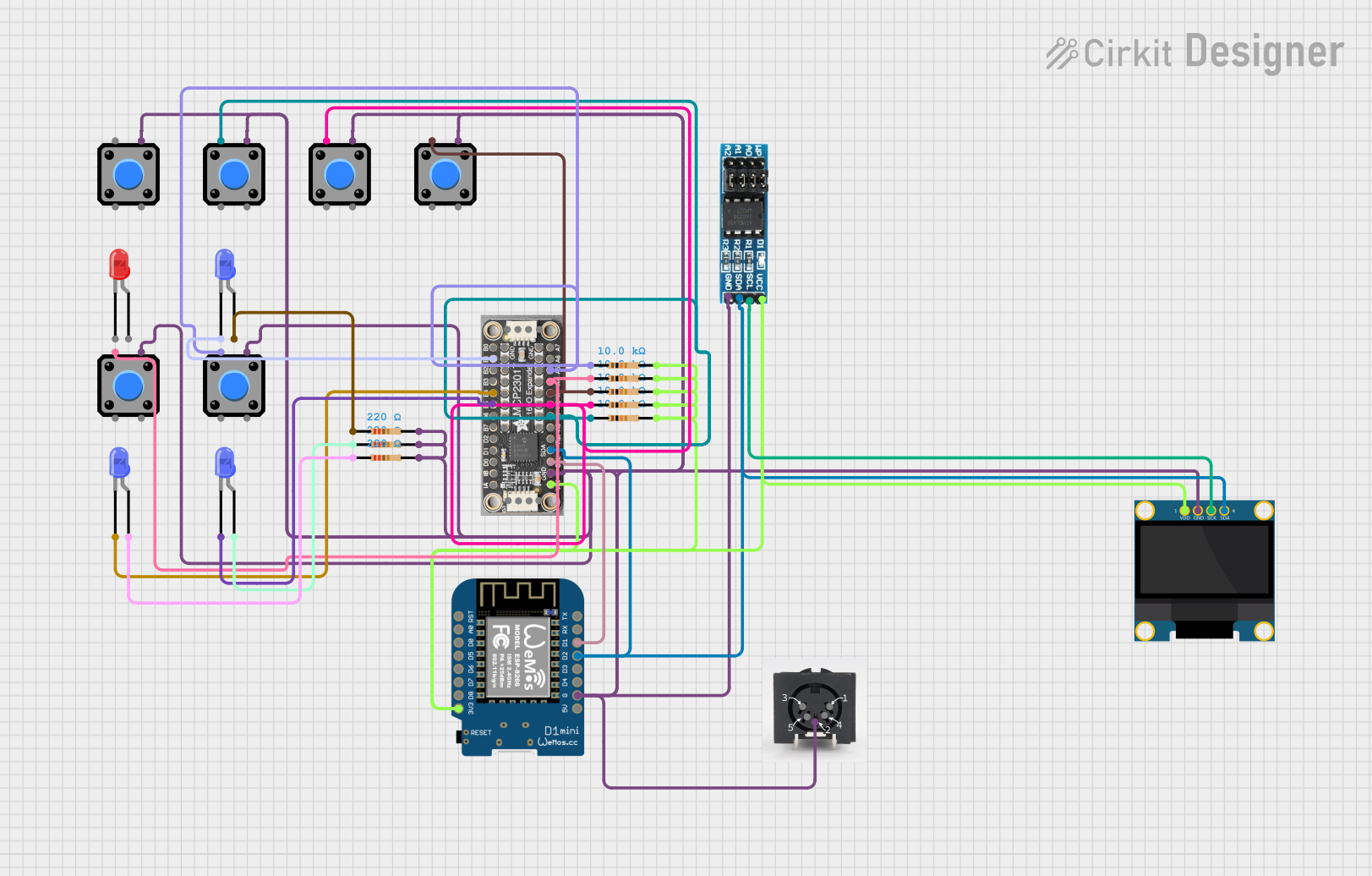
 Open Project in Cirkit Designer
Open Project in Cirkit Designer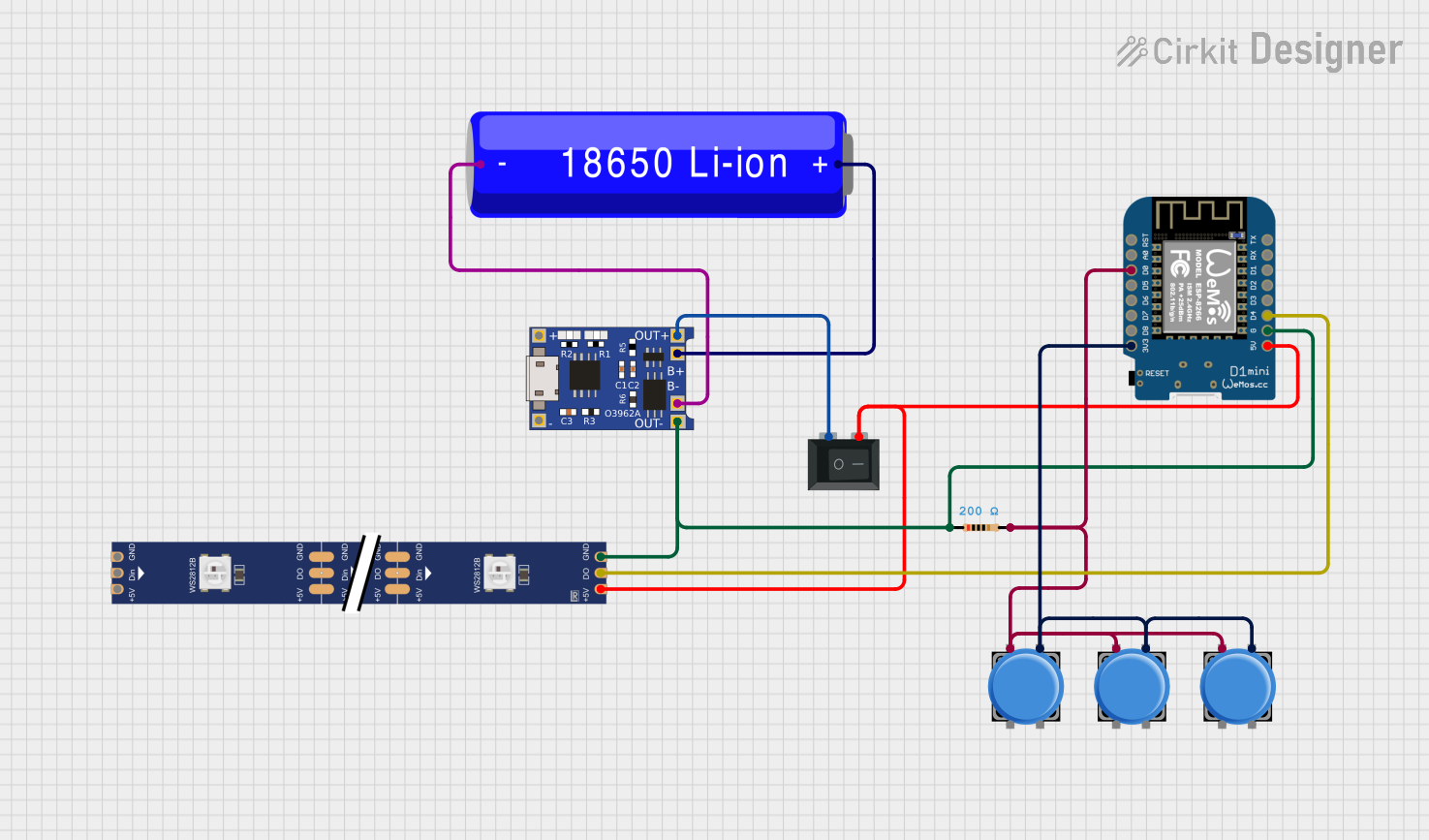
 Open Project in Cirkit Designer
Open Project in Cirkit Designer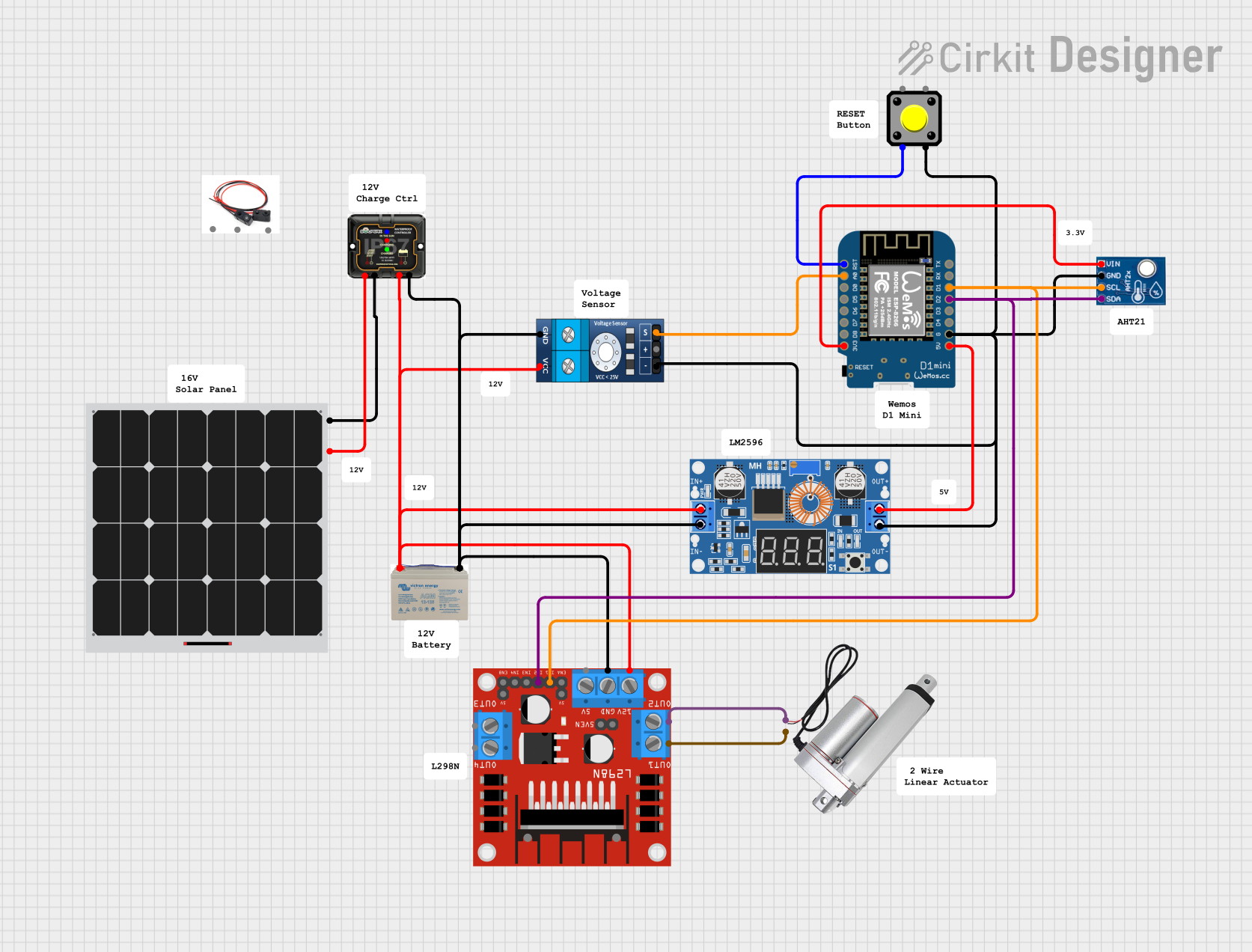
 Open Project in Cirkit Designer
Open Project in Cirkit Designer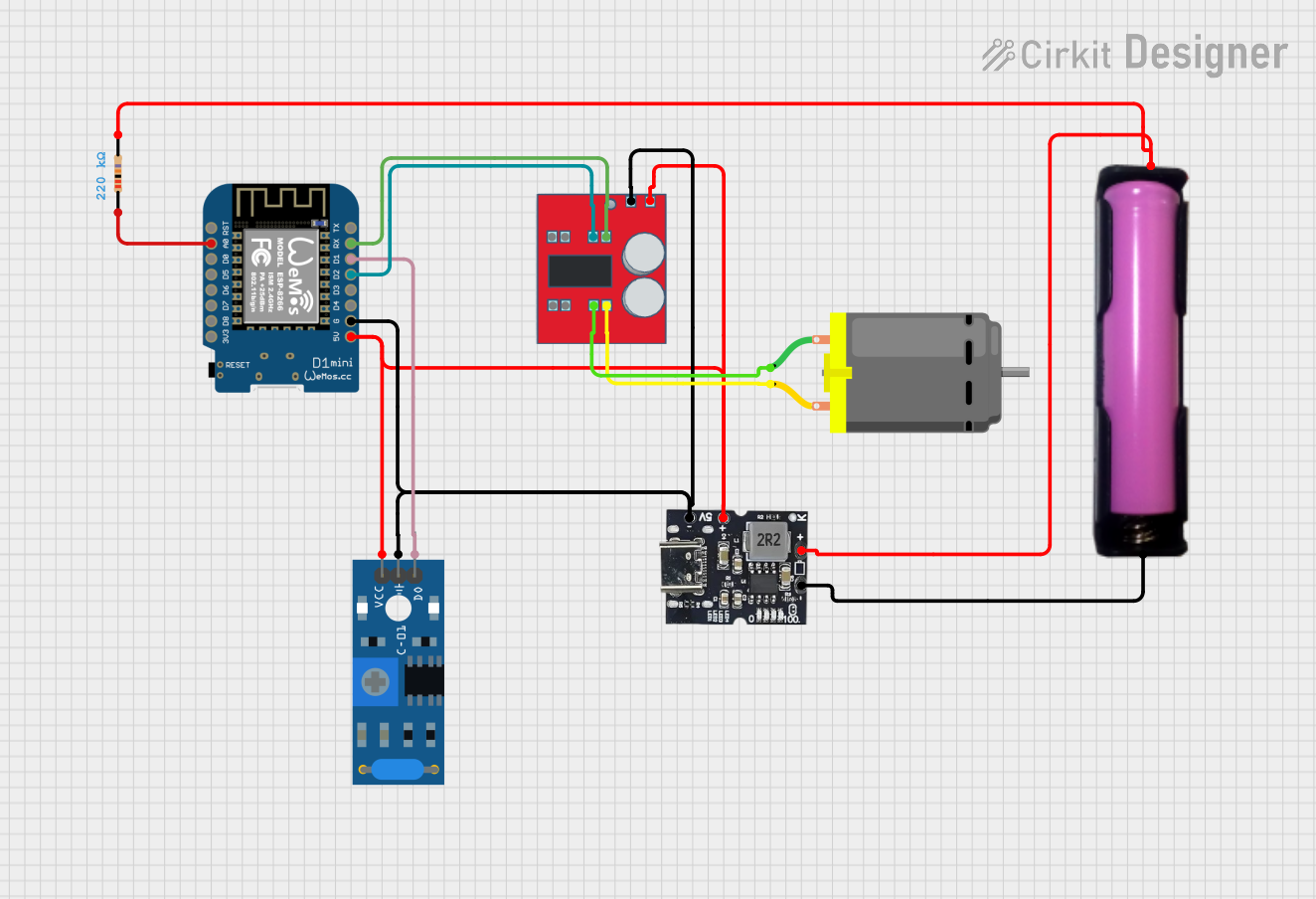
 Open Project in Cirkit Designer
Open Project in Cirkit DesignerExplore Projects Built with Wemos D1 Mini V4

 Open Project in Cirkit Designer
Open Project in Cirkit Designer
 Open Project in Cirkit Designer
Open Project in Cirkit Designer
 Open Project in Cirkit Designer
Open Project in Cirkit Designer
 Open Project in Cirkit Designer
Open Project in Cirkit DesignerCommon Applications and Use Cases
- IoT devices and smart home automation
- Wireless sensor networks
- Remote data logging and monitoring
- Prototyping Wi-Fi-enabled projects
- Controlling devices via mobile apps or web interfaces
Technical Specifications
The Wemos D1 Mini V4 is built around the ESP8266 chip, which provides robust Wi-Fi capabilities and sufficient processing power for a wide range of applications.
Key Technical Details
| Parameter | Specification |
|---|---|
| Microcontroller | ESP8266 |
| Operating Voltage | 3.3V |
| Input Voltage (via USB) | 5V |
| Flash Memory | 4MB |
| Clock Speed | 80 MHz / 160 MHz |
| Wi-Fi Standard | 802.11 b/g/n |
| GPIO Pins | 11 |
| ADC Resolution | 10-bit |
| USB Interface | Micro-USB |
| Dimensions | 34.2mm x 25.6mm |
Pin Configuration and Descriptions
The Wemos D1 Mini V4 features 16 pins, including power, ground, and GPIO pins. Below is the pinout description:
| Pin Name | Function | Description |
|---|---|---|
| 3V3 | Power Output | Provides 3.3V output for external components. |
| G | Ground | Ground connection. |
| 5V | Power Input | Accepts 5V input from USB or external source. |
| D0 | GPIO16 | General-purpose I/O pin. |
| D1 | GPIO5 / I2C SCL | I2C clock line or general-purpose I/O. |
| D2 | GPIO4 / I2C SDA | I2C data line or general-purpose I/O. |
| D3 | GPIO0 | General-purpose I/O pin. |
| D4 | GPIO2 | General-purpose I/O pin. |
| D5 | GPIO14 / SPI CLK | SPI clock line or general-purpose I/O. |
| D6 | GPIO12 / SPI MISO | SPI MISO line or general-purpose I/O. |
| D7 | GPIO13 / SPI MOSI | SPI MOSI line or general-purpose I/O. |
| D8 | GPIO15 / SPI CS | SPI chip select or general-purpose I/O. |
| RX | UART RX | Serial receive pin. |
| TX | UART TX | Serial transmit pin. |
| A0 | ADC Input | Analog input (0-3.3V). |
| RST | Reset | Resets the microcontroller. |
Usage Instructions
How to Use the Wemos D1 Mini V4 in a Circuit
Powering the Board:
- Connect the Wemos D1 Mini V4 to your computer or a USB power source using a Micro-USB cable.
- Alternatively, supply 5V to the 5V pin or 3.3V to the 3V3 pin.
Programming the Board:
- Install the Arduino IDE and add the ESP8266 board package via the Board Manager.
- Select "Wemos D1 Mini" as the board type in the Arduino IDE.
- Connect the board to your computer and upload your code.
Connecting Peripherals:
- Use the GPIO pins to connect sensors, actuators, or other modules.
- Ensure that external components operate at 3.3V logic levels to avoid damaging the board.
Wi-Fi Configuration:
- Use the ESP8266WiFi library in the Arduino IDE to connect the board to a Wi-Fi network.
- Example code for Wi-Fi setup is provided below.
Important Considerations and Best Practices
- Voltage Levels: The GPIO pins operate at 3.3V. Avoid applying 5V directly to these pins.
- Power Supply: If powering the board via the 5V pin, ensure the power source is stable and regulated.
- Heat Management: The ESP8266 chip may get warm during operation. Ensure proper ventilation.
- Firmware Updates: Keep the ESP8266 firmware updated for optimal performance and security.
Example Code for Wi-Fi Connection
#include <ESP8266WiFi.h>
// Replace with your network credentials
const char* ssid = "Your_SSID"; // Your Wi-Fi network name
const char* password = "Your_Password"; // Your Wi-Fi network password
void setup() {
Serial.begin(115200); // Initialize serial communication at 115200 baud
WiFi.begin(ssid, password); // Start Wi-Fi connection
Serial.print("Connecting to Wi-Fi");
while (WiFi.status() != WL_CONNECTED) {
delay(500); // Wait for connection
Serial.print(".");
}
Serial.println("\nConnected to Wi-Fi!");
Serial.print("IP Address: ");
Serial.println(WiFi.localIP()); // Print the assigned IP address
}
void loop() {
// Add your main code here
}
Troubleshooting and FAQs
Common Issues and Solutions
Board Not Detected by Computer:
- Ensure the USB cable is data-capable (not just for charging).
- Check if the correct COM port is selected in the Arduino IDE.
- Install the necessary USB drivers for the Wemos D1 Mini V4.
Wi-Fi Connection Fails:
- Double-check the SSID and password in your code.
- Ensure the Wi-Fi network is operational and within range.
- Restart the board and router if necessary.
Code Upload Fails:
- Verify that the correct board and port are selected in the Arduino IDE.
- Press and hold the "RST" button while uploading the code.
- Check for syntax errors or incompatible libraries in your code.
GPIO Pins Not Responding:
- Confirm that the pins are correctly configured in your code.
- Ensure external components are connected properly and powered correctly.
- Avoid using GPIO0, GPIO2, and GPIO15 for critical functions, as they have specific boot-related roles.
FAQs
Q: Can I power the Wemos D1 Mini V4 with a battery?
A: Yes, you can use a 3.7V LiPo battery with a suitable voltage regulator to provide 3.3V to the 3V3 pin.
Q: What is the maximum current output of the 3V3 pin?
A: The 3V3 pin can supply up to 500mA, depending on the input power source.
Q: Can I use the Wemos D1 Mini V4 with MicroPython?
A: Yes, the ESP8266 chip supports MicroPython. You can flash the MicroPython firmware to the board and use it for development.
Q: How do I reset the board to factory settings?
A: Press and hold the "RST" button for a few seconds to reset the board. For a full factory reset, re-flash the firmware.